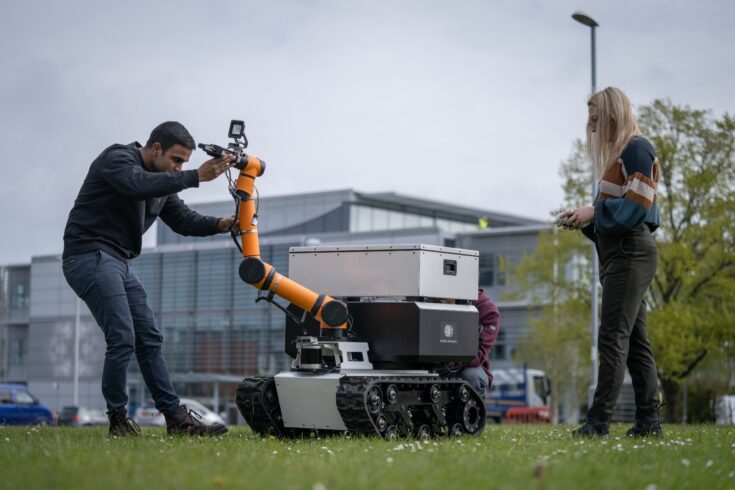UK start-up Oxford Dynamics has won a £1 million contract with the Defence Science and Technology Laboratory to develop advanced robots for environmental remediation and recovery following chemical, biological, radiological and nuclear incidents.
Located at the Science and Technology Facilities Council (STFC)’s Rutherford Appleton Laboratory, this pioneering start-up is developing an advanced mobile AI robot to serve as the first point of contact during chemical or biological incidents.
Designed specifically for use by the Department for Environment, Food and Rural Affairs, the robot will operate beyond an operator’s line of sight.
It will navigate hazardous terrains where it is too dangerous to work, while performing a range of semi-autonomous tasks.
Next generation robotics
At STFC’s Rutherford Appleton Laboratory at the Harwell Campus in Oxfordshire, Oxford Dynamics has flexible and affordable access to the advanced research facilities and dedicated business support available on site.
Here, STFC’s cutting edge technologies, expertise and business support have played a key role in the success of innovative early-stage businesses for more than 10 years.
For Oxford Dynamics, it is providing an ideal location to develop, test and evaluate its advanced AI robot in a range of representative terrains covering grass, concrete, gravel, steps and slopes.
Advanced AI technologies
Mike Lawton, co-founder and Director of Oxford Dynamics, said:
This is a fantastic win for Oxford Dynamics, and an excellent opportunity to showcase our innovative robotic skills fused with the advanced AI technologies that we’re currently developing.
This is an exciting example of future implementation of AI, where an operator can simply tap on an object on a screen, and the robot will figure out the best way to pick it up, retrieve and store it. This involves object detection, assessing surface quality and also estimating weight, to ensure the robot doesn’t overbalance when lifting heavy items.
The expertise available to us here at RAL, both in the technology and in the business development spheres, has been invaluable to us as we now move towards the next stages of this project.
Economic and societal benefits
Ultimately, Oxford Dynamics will incorporate their advanced AI software to the robot, enabling it to handle highly complex data in real-time, and be controlled in a way that feels very natural, almost human-like.
Paul Vernon, Executive Director of Business and Innovation at STFC said:
Oxford Dynamics’ location here at STFC’s Rutherford Appleton Laboratory is providing vital access to a technologically sophisticated environment within which to operate on a daily basis.
The advanced research facilities, expertise and business support available here on site enable businesses to accelerate the development of new products and services to tackle our most difficult and urgent challenges.
Oxford Dynamics is an inspirational example of a company doing exactly this, using advanced AI and robotics technologies to develop a new generation of technology that will benefit our economy and society.

